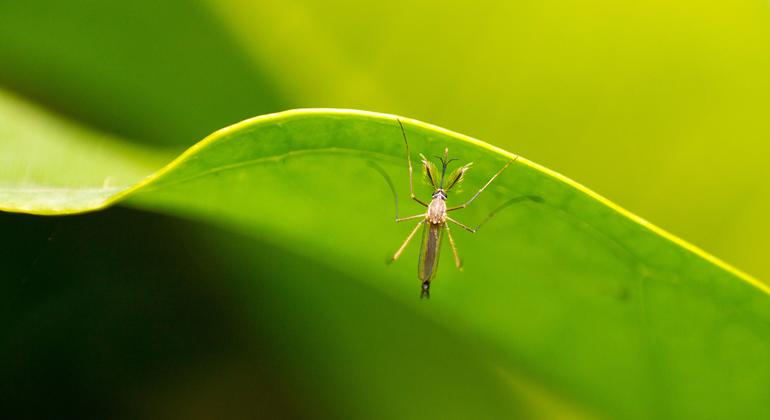Dr. Raman Flawandan, head of the World Disease District Diseases, said the World Health Organization:
“About half of the world’s population is at risk of dengue fever, and dengue fever affects approximately 129 countries. We are able to report about 100 to 400 million cases annually. The American region alone has reported about 2.8 million cases and 101,280 deaths.”
Dengue fever, which is also called bone breaking fever, is the most common viral infection that is transmitted from mosquitoes to humans. Most people with dengue fever are not symptoms and are recovering within a week to two weeks. But some people develop severe dengue fever and need hospital care.
Speaking to journalists in Geneva today, Friday, Dr. Raman Flawandan said:
“In some cases, especially when you develop infection for the second time, this can lead to severe dengue fever and can also be fatal.”
Dengue fever is spread by a kind of mosquitoes called pads. The disease is more common in tropical and semi -tropical climates.
Dr. Vlawoodan explained that the occurrence of fever has grown greatly around the world in recent decades.
Dr. Flawadan said:“In 2000, we had about half a million cases, and now we recorded more than 4.2 million cases, which shows an eight -fold increase.”
He added that this number could increase “with more and more accurate numbers.”
Asia represents about 70 percent of the global diseases, and future expectations. In Europe, it is spreading with ancient mosquitoes extensively, and dengue fever and chikungunia have been reported for more than a decade.
Dr. Flawadan said:“European countries are also on alert because Europe remains the transmission of the dirty either dengue or Xikungunia since 2010. We have witnessed more outbreaks since then and it is estimated that mosquitoes are present in about 22 European countries.”
Several factors in addition to climate change led to the spread of dengue fever, such as increasing the movement of people and commodities, urbanization and pressure on water and sanitation systems.

The WHO expert said“The mosquito is able to survive even in the case of water scarcity. Therefore, dengue fever can increase during the state of floods as well as dehydration. The virus and carrier multiply at a higher temperature. This is a well -known fact.”
There is no specific treatment for dengue fever, and there is no direct drug intervention available. Usually, the disease is treated with medications to treat fever and pain.
Dengue fever test takes two to three days before a reliable result.
There are several new tools under development that provide greater hope for the prevention and control of dengue, such as the best diagnosis. A few antiviral drugs are undergoing clinical trials.
Dr. Flawadan said:“Two or three of these drugs are under trial passes through the experiments of the second stage and will be transferred to the third stage, which is very promising. There is also one vaccine of dengue fever in the markets, and there are two other vaccines candidate in the process of preparation and they are under review.”
The World Health Organization confirms that prevention is necessary. It is important for people to protect themselves at home, schools and in work by spraying repellent materials around the buildings, given that mosquito bites occur during the day.
Other preventive measures include mosquitoes and sleeping under the law.

Leave a Reply